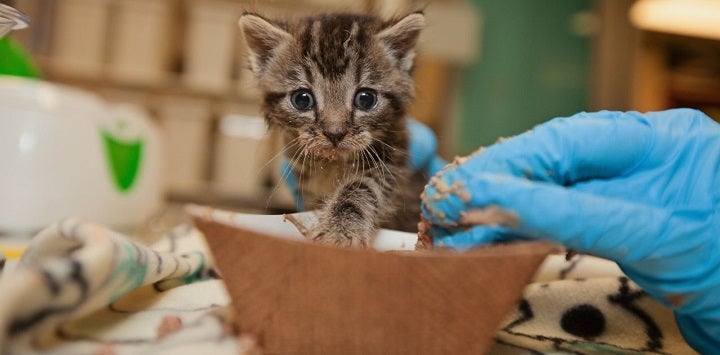
How to Start a Pet Food Pantry
As surrender prevention programs have grown in popularity and necessity, one of the first programs developed by many organizations is a pet food pantry. Prior to opening your pet food pantry, there are many variables to consider to ensure your program is successful.
Considerations for Beginning a Program:
- Do other pet food pantries exist in your community (service area, restrictions, process)?
- Duplicating services will add unnecessary work to your organization. If other organizations are already operating a pet food pantry in your area, consider if another is truly necessary.
- Will your pantry serve a different community or population?
- Could you partner with the existing pantry to increase capacity?
- Are the restrictions or processes of existing pantries resulting in a lack of services for a specific population?
- Duplicating services will add unnecessary work to your organization. If other organizations are already operating a pet food pantry in your area, consider if another is truly necessary.
- Are human food pantries providing pet food in your community (service area, restrictions, process)?
- Access to care and services should be as easy as possible for those in need of assistance. If someone has to make multiple visits to different locations to access services, that’s a barrier. Consideration should be given to a potential partnership with a local human service agency that may be providing food to see if you can provide supplies for the pets of the human clients.
- Where will you source your pet food? Will all food provided be donations or are you prepared to pay for food?
- Once you start a program, you should be prepared to keep the program operating. A well-thought-out plan for how you will acquire food, where from and if you will have the potential budget for food should be considered prior to opening your pantry. What is your plan for fundraising or receiving/soliciting donations?
Next Steps:
- Who will be able to access your pet food pantry and what requirements must they meet?
- Will you register new clients? Will you service a specific zip code or neighborhood? Will participants be required to show proof of income or pet information (s/n status, vaccines, etc).
- Be aware that barriers to service could prevent you from having the time to build a trusting relationship with new clients. Trust is a key component to having productive conversations about sterilization and wellness.
- Will you register new clients? Will you service a specific zip code or neighborhood? Will participants be required to show proof of income or pet information (s/n status, vaccines, etc).
Pantry Operations:
- What will food distribution look like for your pantry?
- Will you set a limit on the number of times per month or year that food will be provided?
- Will you distribute food in its original containers or will you divide it into other containers? How much food will you provide per pet?
- Accurate data tracking will require that you know how much food is distributed and knowing this information in pounds and “meals” can be helpful.
- To maintain an adequate supply of food, you will need a policy on how many pounds of food per pet of a particular size you will provide during one visit.
- Do you have plans to expand?
- As your outreach services expand, do you want to expand your services to provide additional supplies?
- Canned pet food, cat litter, treats, harnesses, collars/leashes and other pet supplies
- As your outreach services expand, do you want to expand your services to provide additional supplies?
![]() ADDITIONAL INFORMATION
ADDITIONAL INFORMATION
Fort Wayne Pet Food Pantry
Neighborhood Pets Outreach & Resource Center